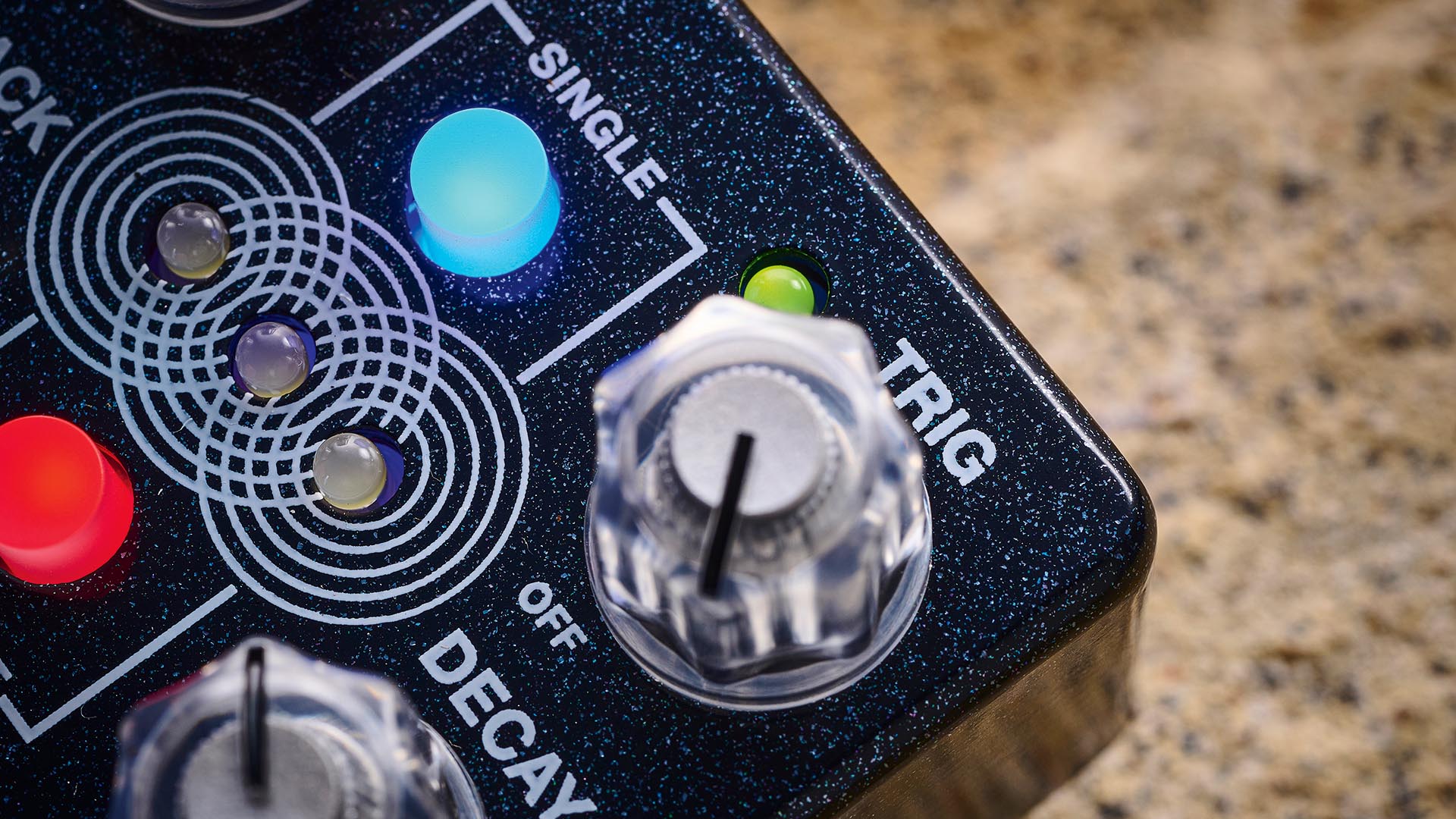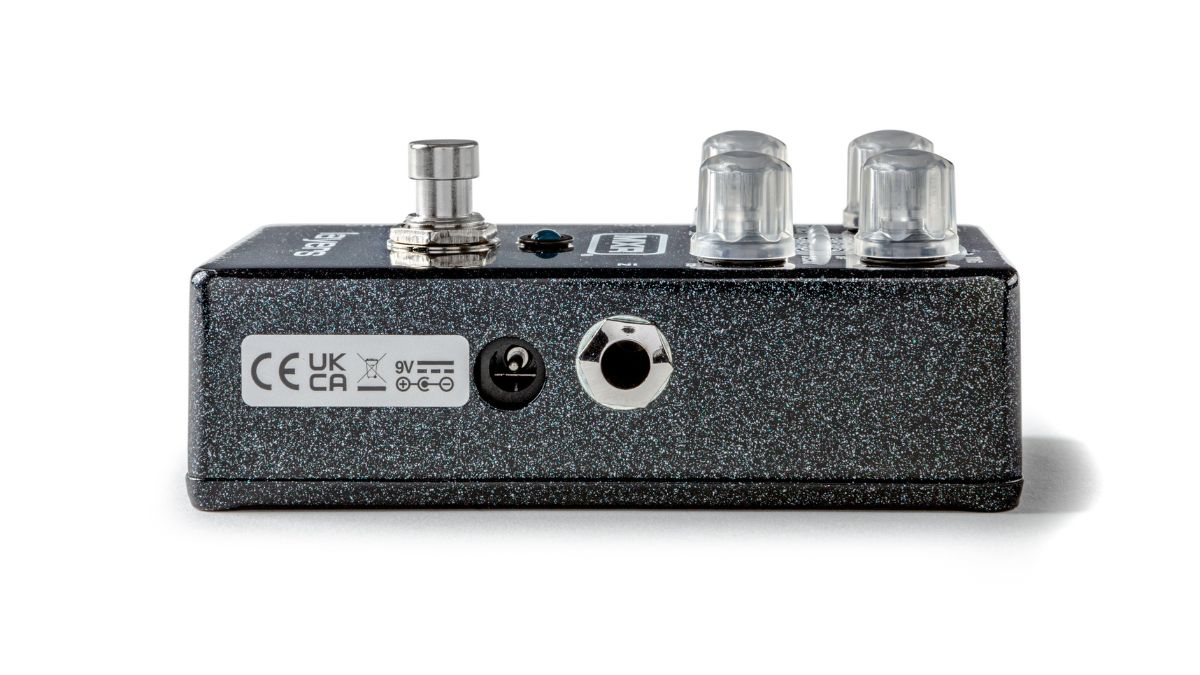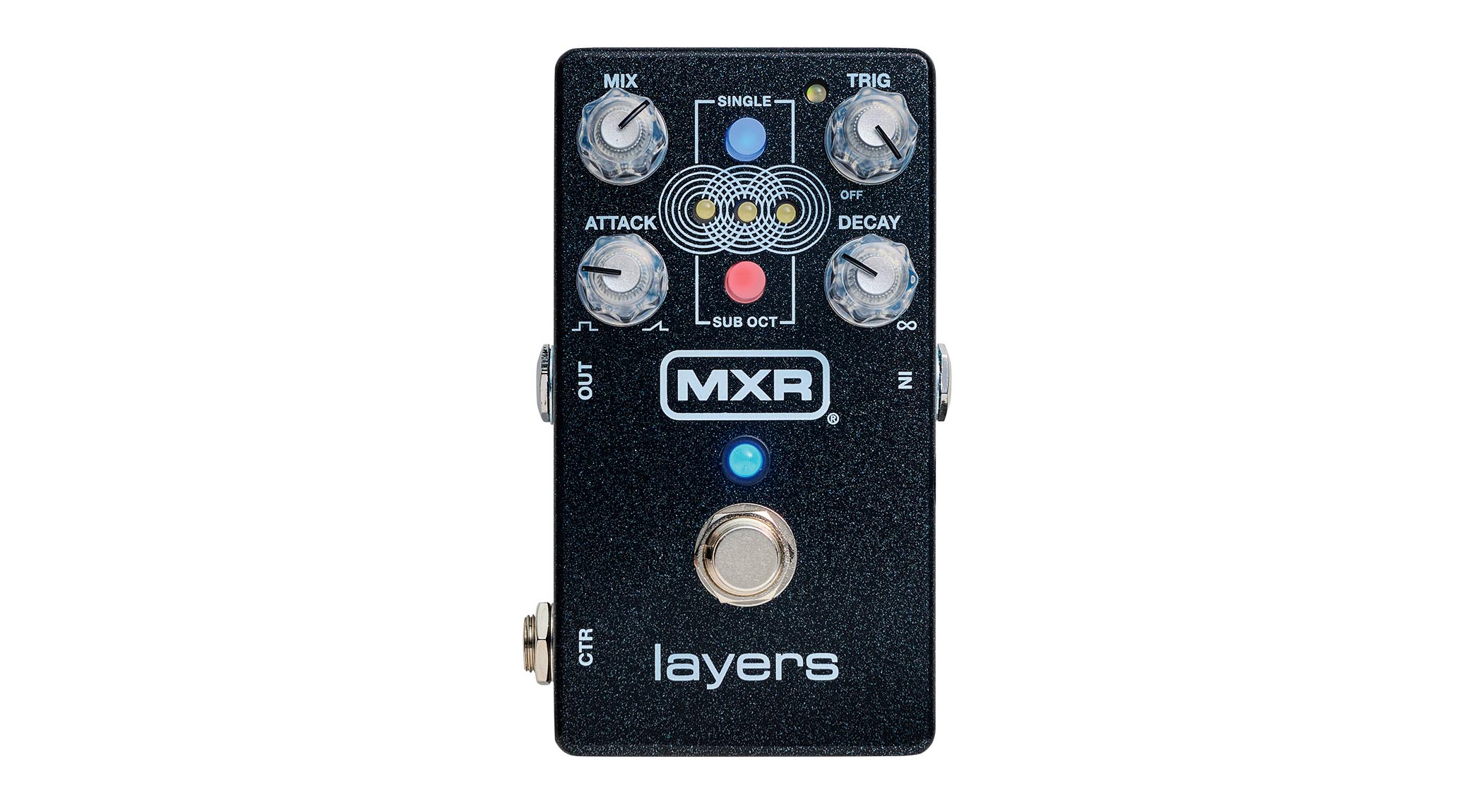Guitar World Verdict
Whether you wish to thicken single notes or create drones and ambient textures (perhaps with three-note chords that your fingers could never stretch to), MXR’s claim that Layers will “extend the creative potential of your instrument” is absolutely right.
Pros
- +
Compact size. Easy operation.
- +
Onboard effects.
- +
Sub octave facility.
- +
External control.
Cons
- -
Accessing secondary functions can be a bit of a faff.
You can trust Guitar World
What is it?
MXR’s Layers pedal can freeze and sustain a note or chord, creating a sustained ‘layer’ that can be used to enhance and bolster notes or act as a pad that you can play over.
Pressing the footswitch takes a sample of your playing at that point, which will sustain until you release the footswitch. Alternatively, there’s auto-triggering via playing dynamics, with the Trig knob setting a threshold above which a layer can be triggered.
A Mix knob sets the level of the layer in relation to your dry sound, and you also get knobs to set the Attack (fade-in time) of the layer, and the Decay, which can be turned up full for infinite sustain.
Usability and sounds

The pedal supports three simultaneous layers that overlap with each other and their status is indicated by three glowing LEDs that fade in and out. Each subsequent layer replaces the oldest after the third layer has been captured.
A press of the Single button, however, keeps things simpler by limiting the sustain effect to a single layer – this mode works great in conjunction with the Trig knob to add an underlying or parallel layer of interest to each note you pick.

At its most basic, the pedal sustains your straight sound, but you can transform the sustained sound with its onboard effects, all accessed as secondary knob functions while pressing and holding the Single or Sub Oct buttons. You can set up delay, modulation (chorus, tremolo or a blend) and a diffusion amount that adds texture to the layer(s).
You can transform the sustained sound with its onboard effects, all accessed as secondary knob functions
There’s also the possibility of adding a sub-octave to either the whole layer or just to its lowest frequencies for more clarity. All of this offers plenty of scope for building ethereal, ambient pads or delivering a creative twist to those single notes.
All the latest guitar news, interviews, lessons, reviews, deals and more, direct to your inbox!
Besides standard mono you can run the pedal in stereo with three layers panned left, centre and right, or you can have a Dry/Wet split. You can also connect external switches to trigger layers, or an expression pedal to blend between two setting configurations.
Verdict

Whether you wish to thicken single notes or create drones and ambient textures (perhaps with three-note chords that your fingers could never stretch to), MXR’s claim that Layers will “extend the creative potential of your instrument” is absolutely right.
Specs

Launch price: $229/£249
Origin: USA
Type: Sustain pedal
Features: , tap tempo, dry kill, mono or stereo operation, dry/wet split, sub-octave, FX
Controls: Mix, Trig, Attack, Decay, Single button, Sub Oct button, Tap/Exp-CTR-Audio switch, internal mono/stereo switch, Bypass footswitch
Connectivity: Standard input, standard output, CTR input
Bypass: Buffered
Power: 9V DC adaptor (supplied) 300mA
Dimensions: 62 (w) x 110 (d) x 47mm (h
Contact: Jim Dunlop
Hands-on videos
Jim Dunlop
AndyDemos
Harp Lady
Trevor Curwen has played guitar for several decades – he's also mimed it on the UK's Top of the Pops. Much of his working life, though, has been spent behind the mixing desk, during which time he has built up a solid collection of the guitars, amps and pedals needed to cover just about any studio session. He writes pedal reviews for Guitarist and has contributed to Total Guitar, MusicRadar and Future Music among others.




